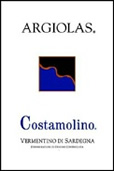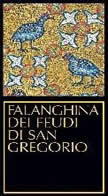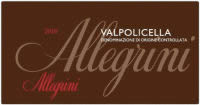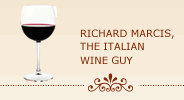Taking it Outdoors: Ten Great Value-priced Italian Wines for Al Fresco Dining
No doubt about it, summer is almost here and your thoughts are turning to moving your dining outdoors. And whether it’s relaxed snacking on your patio, hors d’oeuvres for a summer garden party, grilling ribs or steaks or a picnic in the park, there is a great, inexpensive Italian wine that’s perfect for the occasion.
Listed below are ten Italian wines – reds and whites as well as a rosé - that are ideal companions for a wide variety of outdoor entertaining and dining occasions. Some are light and fruity and would go well with a picnic lunch in the park or light snacks and hors d’oeuvres at a reception. Others are more robust and full-bodied and are good matches for heartier fare like steak or burgers from the grill.
All the wines reviewed are wallet-friendly in that they are each priced under $20. They are listed alphabetically by producer within the white and red wine categories.
White Wines:
Adami, “ Bosco di Gica” Prosecco Brut NV (about $19)
Bosco di Gica” Prosecco Brut NV (about $19)
There is something about sparkling wines that seem to make anything more fun and puts people in the mood to celebrate. With persistent, petite bubbles and a creamy texture with delicate pear and apple flavors, this delightful, lightly sparkling Prosecco goes well with pre-dinner appetizers as well as first-course fish and seafood dishes. The “Bosco di Gica” Prosecco is another great endeavor by the family-run Adami estate, one of Italy’s leading Prosecco producers.
Alois Lageder, Pinot Grigio 2009 (about $13)
Pinot Grigio has enjoyed great commercial success in this country– it is the most popular imported wine in the U.S. The downside of its popularity is that much of the Pinot Grigio imported and sold in the U.S. falls into the uninteresting and insipid category with the result that many wine professionals look down their noses at Pinot Grigio. It has gotten so bad that I’m almost embarrassed to order it in polite company.
However, there are some Italian producers creating well-made versions of  Pinot Grigio that are aromatic, pleasantly acidic and richly flavored and worth searching out. One such producer is the Alois Lageder winery in the mountainous Alto Adige region in northeastern Italy. While it was founded over 150 years ago, it is a winery that has stayed up to date and has enjoyed considerable commercial success. The winery utilizes sustainable, biodynamic and organic farming methods to produce a range of white and a few red wines of character and distinction.
Pinot Grigio that are aromatic, pleasantly acidic and richly flavored and worth searching out. One such producer is the Alois Lageder winery in the mountainous Alto Adige region in northeastern Italy. While it was founded over 150 years ago, it is a winery that has stayed up to date and has enjoyed considerable commercial success. The winery utilizes sustainable, biodynamic and organic farming methods to produce a range of white and a few red wines of character and distinction.
Lageder’s Pinot Grigio is sourced from various vineyards in the southern part of the Alto Adige region. The estate’s 2009 Pinot Grigio strikes a remarkable balance between ripe fruit, rich flavors and substantial food-friendly acidity. This is a varietally correct version of a wonderful grape. If only more Pinot Grigio wines were this good.
This wine is great as a before-dinner drink (aperitivo) and also pairs well with rice and pasta dishes and other picnic fare. However, it’s also a great companion for more elegant fish, shellfish, chicken and other white meat dishes.
Argiolas, “Costamolino” Vermentino 2010 (about $12)
Vermentino is a white grape variety that makes wonderfully aromatic dry wines with steely character and delicious acidity. The Vermentino variety has flourished on the island of Sardegna (Sardinia) where the highly respected Argiolas winery is located.
 The 2010 “Costamolino” is 90 percent Vermentino and 10 percent other select Sardinian white grapes. Harvested in September, the grapes are fermented and aged in stainless steel tanks for five months before bottling.
The 2010 “Costamolino” is 90 percent Vermentino and 10 percent other select Sardinian white grapes. Harvested in September, the grapes are fermented and aged in stainless steel tanks for five months before bottling.
Pale straw yellow in color, the Costamolino has wonderful citrus and tropical fruit aromas supported by zesty acidity. It is a full-bodied white wine with ripe, white fruit flavors.
It’s my “go-to” wine for light summer dishes from pasta to seafood, grilled fish, chicken or pork casseroles and grilled vegetables.
Feudi di San Gregorio, Falanghina 2009 (about $17)
While the Campania region has an established reputation as the source of sturdy, robust, red wines, it is also rapidly becoming known as southern Italy’s major source of full-flavored, complex white wines.
The Falanghina grape thrives in the Campania region. It is an ancient variety that was probably familiar to the wine-drinking citizens of ancient Rome. However, Falanghina’s popularity faded over time and the variety seemed destined for oblivion before being revived in the 1960’s. However, it wasn’t really until the beginning of this century that it began to experience a renaissance in popularity.
Feudi di San Gregorio’s Falanghina is a refreshing, warm weather white wine that is  absolutely delicious. It is made entirely of Falanghina produced from a collection of vineyards in the Sannio zone northeast of Naples. The wine is cold-fermented in stainless steel tanks and then spends three months ageing in stainless steel prior to bottling.
absolutely delicious. It is made entirely of Falanghina produced from a collection of vineyards in the Sannio zone northeast of Naples. The wine is cold-fermented in stainless steel tanks and then spends three months ageing in stainless steel prior to bottling.
The wine is straw yellow in color with green nuances at the edge. It has delicate but persistent aromas of pears and melon. It is medium-bodied, crisp and fresh with loads of zesty acidity on the finish.
I find Feudi di San Gregorio’s Falanghina to be an interesting wine with real personality. It can serve as an aperitivo as well as accompany various types of antipasti. It is also delicious with baked or grilled fish, seafood risotto and spaghetti with mussels.
Marcarini, Moscato d’Asti 2010 (about $17)
A lightly chilled glass of Moscato d’Asti is one of my favorite summertime drinks. Moscato d’Asti is a slightly sweet, lightly sparkling, low alcohol (usually 5 to 5-1/2 percent) and relatively inexpensive wine with a fragrant bouquet that is refreshing and just plain fun to drink. Made from the Moscato grape, a well-made Moscato d’Asti will have a fragrant bouquet with honey and apricot flavors and a delicate sweetness balanced by a lively acidity.
 The Marcarini estate in the Piedmont region has a well-earned reputation for turning out top quality Barolo and other red and white wines for generations. The Moscato d’ Asti is the latest addition to their wine list and it is a real charmer.
The Marcarini estate in the Piedmont region has a well-earned reputation for turning out top quality Barolo and other red and white wines for generations. The Moscato d’ Asti is the latest addition to their wine list and it is a real charmer.
Moscato d’Asti is a classic dessert wine best served slightly chilled with light pastries, hazelnut cakes, panettone, almond cookies, zabaglione and fresh fruit. Splash some over fresh strawberries for a truly celestial taste combination.
However, just because it’s sweet doesn’t mean you have to reserve it only to accompany desserts. It’s light and delicate flavors and lively acidity make it an ideal sweet aperitivo as well as a charming companion for a casual brunch or even a picnic. It also goes well with soft cheeses like gorgonzola.
Red and Rosé Wines:
Allegrini, Valpolicella Classico 2010 (about $13)
There is a wide variation in quality of Valpolicella wines, from mass-produced, thin and acidic wines to intense and structured wines with loads of character. It all depends on the producer.
Based in Furmane di Valpolicella, in the hills of the Valpolicella Classico zone just north of Verona in northeastern Italy, the Allegrini estate is one of the most celebrated names in Valpolicella winemaking. The estate has a well-earned reputation for designing quality reds from the Veneto’s indigenous Corvina Veronese, Rondinella and Molinara varietals. While each wine in their lineup has its own distinct character, they are all consistently fruity, balanced and elegant.
Allegrini’s 2010 Valpolicella Classico is no exception. It has an intoxicating bouquet, good fruit with a velvety, plush texture and a pleasing, slightly bitter note on the finish. It is medium to full-bodied with good balance and composition.
It is the perfect accompaniment to those late-evening dinners on the patio, especially those involving pasta and rice dishes served with meat or mushroom sauces as well as other light dishes that include fish, pork or lamb.
Argiano, L’O Rosato 2011 (about $16)
Argiano (or, more formally, Tenuta di Argiano) is one of the most celebrated wineries in the prestigious Montalcino area and produces prize-winning wines such as Brunello di Montalcino, Solengo, Non Confunditur and Suolo. Therefore, you would expect a Rosato (or Rosé in English/French) from Argiano to be special – and it is.
 The 2011 L’O Rosato from Argiano is made entirely of Sangiovese grapes from the estate’s vineyards. After a few hours contact with the grape skins, the newly pressed L’O Rosato juice is transferred to a combination of new and used French oak barrels where it is left to ferment for approximately 4 weeks. The fermented wine is then transferred to stainless steel tanks where it is aged for 3 months before being filtered and bottled.
The 2011 L’O Rosato from Argiano is made entirely of Sangiovese grapes from the estate’s vineyards. After a few hours contact with the grape skins, the newly pressed L’O Rosato juice is transferred to a combination of new and used French oak barrels where it is left to ferment for approximately 4 weeks. The fermented wine is then transferred to stainless steel tanks where it is aged for 3 months before being filtered and bottled.
I had my first Italian Rosato wine several years ago and quickly became a great fan of these wines. I found them to be light, crisp and flavorful - perfect for summer sipping. They were totally unlike some domestic Rosé wines I had previously which I found to be light, sweet and quite uninteresting.
This delicious Rosato is coral pink in color with delicate red berry aromas. Bright strawberry and cherry flavors unfold in the mouth and segue into a captivating finish with some grip.
The L’O Rosato is a multi-purpose wine. It is suitable for drinking as an aperitivo with hors d’oeuvres and snacks or as an accompaniment to salads, cured meats and antipasti. It is excellent with seafood cannelloni made with shrimp and scallops. But it has more than enough fruit flavors and acidic backbone to stand up to heartier fare like grilled fish, grilled meat and poultry and mildly-spiced dishes such as a lightly-spiced carrot soup.
La Valentina, Montepulciano d’Abruzzo 2008 ($14)
It’s important to emphasize right at the beginning that the Montepulciano grape has nothing to do with the ancient hill town of Montepulciano in Tuscany. The two are separate and distinct and have nothing in common except a shared name. The Montepulciano grape is a prolific variety that grows throughout central Italy and accounts for about 50 percent of the vineyard area in the mountainous Abruzzo region on the east coast of Italy. It is the basis for most all of Abruzzo’s DOC red wines.
Given Abruzzo’s mountainous topography, most of the region’s vineyards are planted  on hillsides where the warm, sunny hillsides and cool evening breezes from the Adriatic provide ideal conditions for growing grapes. The Montepulciano variety produces full, fruity but sturdy wines with naturally soft tannins and low acidity which makes them ideal companions for a wide variety of foods. Montepulciano d’Abruzzo wines vary markedly in price from inexpensive to triple-digit price tags depending on how they are produced and who makes them. But my experience is that Montepulciano d’Abruzzo wines seldom disappoint and generally represent real value at any price point.
on hillsides where the warm, sunny hillsides and cool evening breezes from the Adriatic provide ideal conditions for growing grapes. The Montepulciano variety produces full, fruity but sturdy wines with naturally soft tannins and low acidity which makes them ideal companions for a wide variety of foods. Montepulciano d’Abruzzo wines vary markedly in price from inexpensive to triple-digit price tags depending on how they are produced and who makes them. But my experience is that Montepulciano d’Abruzzo wines seldom disappoint and generally represent real value at any price point.
La Valentina’s 2008 Montepulciano d’Abruzzo consists of 100 percent Montepulciano grapes manually harvested from 25 to 35 year old vines in the estate’s vineyards. It has a deep, dark, brooding color with a purple rim. It has a rich bouquet and a plush, velvety mouthfeel with nice acidity and a pleasant, long finish. It is a terrific wine at this price point and while ready to drink now, it will also age well for another 4-5 years.
The wine is ideal to accompany steaks from the grill, roast lamb, risotto with sausage, eggplant lasagna and aged cheeses.
Manzone, “Le Ciliegie” Dolcetto d’Alba 2009 (about $13)
Dolcetto is the perfect red wine for summer. Dolcetto typically is a fruity, medium-bodied, richly-textured wine with elegant aromas and delicate flavors. Despite its name which suggests a sweet wine (from dolcezza, which is Italian for “sweetness), Dolcetto is a dry wine with moderate to good acidity and muted tannins.
 The Manzone winery is located in Monforte d’Alba, which is ground zero for some of the best and most expensive red wines in Italy. Established in 1925, the Manzone winery is a small (20 acre) family-run winery. Despite its relatively small size, the Manzone winery uses only estate grown grapes in producing its wines and has a well-earned reputation for producing serious, quality oriented wines.
The Manzone winery is located in Monforte d’Alba, which is ground zero for some of the best and most expensive red wines in Italy. Established in 1925, the Manzone winery is a small (20 acre) family-run winery. Despite its relatively small size, the Manzone winery uses only estate grown grapes in producing its wines and has a well-earned reputation for producing serious, quality oriented wines.
Manzone’s 2009 “Le Ciliegie” (pronounced leh chi' leh zhee; Italian for "the cherries") is 100 percent Dolcetto from grapes harvested in the winery’s Le Ciliegie vineyard. The grapes undergo a short maceration and then are aged in stainless steel tanks for 11 months.
With its fruit-forward flavors, good acidity and muted tannins, Dolcetto wines go well with many different types of food and I always look for them on restaurant wine lists. It’s terrific with casual foods such as pizza, chef salads, cold cuts and sandwiches. Or you can move up the food chain and serve it with dishes such as Bagna Cauda, risottos, ravioli or pasta with mushroom or meat sauces.
Poliziano, Rosso di Montepulciano 2007 (about $14)
Poliziano is one of the top producers of Vino Nobile di Montepulciano, one of Tuscany’s most storied wines. The Poliziano winery is located on the southern slopes of the scenic and ancient hilltop town of Montepulciano in the southeastern corner of Tuscany. The Poliziano estate has roughly 63 acres of vineyards reserved for the production of Rosso di Montepulciano and approximately double the amount of vineyard space allocated for the more prestigious Vino Nobile di Montalpulcino.
Vino Nobile di Montalpulciano and Rosso di Montelpulciano share many similarities. Both are made from the same grape variety, Prugnolo Gentile (the local clone of Sangiovese), and both are produced in the same area of production around the town of Montepulciano. However, the ageing requirements are different – 1 year for Rosso and 2 years for Vino Nobile. This means that Rosso di Montepulciano wines will generally be fruitier and more approachable than the longer-aged, more aristocratic Vino Nobile wines.
However, not all Rosso di Montalpulciano wines are the same. Some producers treat  their Rosso wines almost as an afterthought, using whatever grapes and wines are left over or considered unsuitable for their more prestigious – and expensive – Vino Nobile wines. However, other producers like Poliziano make their Rosso from specific vineyard sites and allot the time and attention necessary to produce Rosso wines of character and integrity.
their Rosso wines almost as an afterthought, using whatever grapes and wines are left over or considered unsuitable for their more prestigious – and expensive – Vino Nobile wines. However, other producers like Poliziano make their Rosso from specific vineyard sites and allot the time and attention necessary to produce Rosso wines of character and integrity.
Poliziano’s 2007 Rosso di Montepulciano is 80 percent Prugnolo Gentile (i.e., Sangiovese) and 20 percent Merlot. The wine is aged for 8 months in a combination of small oak barriques and large vats.
This wine is a class act. It’s red fruit and berry aromas, silky tannins and lush fruit flavors are redolent of Rosso’s bigger and more expensive brother, Vino Nobile di Montalpulciano. It’s a wine that goes best with meats like grilled beef, lamb and pork. Try it with a succulent Milanese-style Osso Buco. It is also goes well with big steaks like the ones the Tuscans prize. But you can also pair it with hearty pasta dishes like lasagna or spaghetti with meat sauce.
Note – prices indicated are averages for generally available wines and so will vary from store to store. While the wines are readily available in most well stocked wine shops, availability is not guaranteed so it may be advisable to call or check their websites for availability and price before making the trip.
Richard Marcis
www.WineWordsWisdom.com
return to wine review and musings »»



